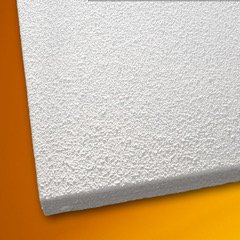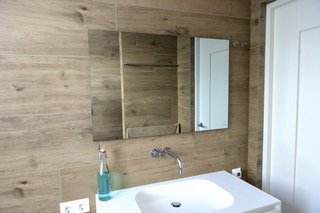Imagine sitting on a terrace breathing the fresh air. You feel the sun’s warmth upon your skin and can fully relax. It just feels so much better than being indoors. Unfortunately, life calls, and that means working indoors…
I have good news! Infrared heating panels provide a very similar experience to bathing in the sun. You can enjoy the relaxing warm sun-rays at your desk or on the couch.
I am currently loving my 1000 watts of indoor sunshine provided by two sleek modern wall-mounted infrared panels. They are a great alternative to conventional space heating. And I would recommend these silent and healthy heaters to everyone.
What are infrared heating panels?
Infrared heating panels are thin aluminum panels that provide space heating through infrared radiation. Infrared heating panels work on electricity and are:
- Highly efficient
- Completely silent
- Maintenance-free
- Easy to install
- Comfortable
- Applicable in every room including the bathroom
They are available as smooth or rough white panels, but can also be ordered with a picture of your choice or even as a mirror.
These pictures show the different applications and looks of infrared heating panels:




The pictures above show a ceiling-mounted white panel, a mirror panel in the bathroom, and two panels with art.
How do infrared heating panels work?
Infrared heating panels are designed to convert electricity into infrared radiation. They emit warm infrared from the front of the panel, while the back of the panel is well insulated. The infrared rays travel through the air and warm up any object or person that is ‘hit’ by these warm rays.
In this way, no energy is lost in heating the air. While normal convection-based heaters warm up the air, infrared panels directly warm people and objects. I wrote an entire article on how infrared heating panels work. You can find it here: How do infrared panels work?
Normally, because warm air rises to the ceiling, the room is the warmest at the ceiling and gets cooler closer to the ground. Because of this, much of the heat gets lost.
Since infrared panels transfer their warmth directly to the desired objects and people, they are more efficient than conventional heaters. In fact, infrared heating can be 40% more efficient than regular space heating. You can read all about their energy use and efficiency in my article: How much energy does an infrared heater use?
Infrared radiation is healthy heat
In case you are wondering if radiation is harmful, you can rest easy. Infrared radiation coming from these heating panels is completely harmless. In fact, it is quite beneficial to our health and is even used in some forms of therapy.
Infrared radiation is the same radiation we feel when we feel the sun’s warmth, The sun, however, also emits visible light and harmful UV light. An infrared heating panel does not. Therefore, you will not get sunburnt from infrared heating, although you will also not get a tan.
The advantages of infrared heating panels
Infrared heating panels offer a host of advantages compared to other forms of space heating. The advantages are:
- No maintenance is required. You can wipe the surface clean if you so desire, but that’s it.
- Completely silent heating.
- Infrared panels do not emit any light.
- Infrared heating is not affected by a draft or ventilation.
- No fire hazard, the panels get warm to the touch, that’s it.
- It does not take up any floor space other than needing to be free from other objects to radiate the heat outward.
- Installation is extremely easy, they can be mounted to the wall or ceiling with the mounting frame included with the panel.
- Extremely long warranty, I got 10 years on my Ecosun panels!
- Almost instantaneous warmth. It takes about 1 minute for the panels to get to full heating capacity.
- Dry air is no longer an issue when using infrared heat because infrared heat the air.

(Image credits: Arno Reijnen from www.infrarood-warmtepanelen.nl)
The disadvantages of infrared heating panels
No heater is 100% perfect and infrared panels also have some disadvantages:
- The panels require some wall or ceiling space and need some space around them for their rays to not be blocked by furniture.
- The unusual way of heating takes some getting used to. Especially during the colder months, body parts that are not directly in sight of the panel can get a bit cold. In my experience, a blanket over my legs and some warm slippers do the job.
- Since the panels do not heat the air but the objects and people in sight of the panel, the warmth is quickly gone when the panels are turned off.
- The panels do not come with a thermostat or heating modes. You can always install a thermostat on the power cord to overcome this.
- The warmth that you feel from an infrared panel decreases significantly when your distance to the panel increases. Therefore, finding the right spot where you are most comfortable can be a challenge.
I wrote an in-depth article about all the pros and cons of infrared heating. You can find it here: Infrared heating pros and cons.
How infrared heat feels compared to conventional heating
Conventional heaters such as radiators, woodstoves, or gas or oil heaters heat up the air by way of convection. This is the well-known heat that provides room temperature in your house and makes you feel the comforting heat whenever you enter a warm building.
Infrared heating works differently and is much more comparable to sunshine. Whenever you walk into the rays of an infrared heating panel’s reach, it feels similar to stepping into the sunlight. This comes with the relaxing feeling that the sun’s heat provides, without being in a space where the air around you is hot and dry. Infrared radiation is much more natural as humans have always enjoyed the sun’s heat long before fire or central heating was invented.
Conventional heating dries the air. Because of this, your throat and eyes can start to hurt a little and you might feel some discomfort. Infrared heating does not have these issues and actually makes you feel like you are bathing in wonderful sunlight while being in fresh air.
Dry air is no longer an issue with infrared heating
Infrared heating does not dry the air and therefore maintains a comfortable air humidity. At worst, infrared heaters can make your indoors feel like a very hot sunny day. This is easily fixed by turning off some of the panels.
Infrared heating is not affected by a draft or ventilation. Therefore, cleaner and fresher air is easy to realize with infrared heating. In contrast, conventional air heating makes you lose a lot of warmth when you need to freshen the air and open a window to ventilate.
My personal experience with infrared heating panels
I personally have 1000 watts of infrared heating panels in my small dining and kitchen area (8 m²), and I can say that it makes the room comfortable even with poor insulation. However, it can get a bit chilly with near-freezing temperatures outside. When I sit at my desk, my legs are not in sight of the infrared rays. Therefore, during the winter, I use a blanket to cover my legs.
I have to say that it feels great to feel like you are enjoying the sunshine while sitting inside on a cloudy day. You can read all about my experience with these panels in my article: Our experience with infrared heating panels.

How big are infrared panels, and what do you get?
Infrared panels are available in many sizes based on the desired wattage. They produce a fixed amount of wattage per square foot, so a larger panel provides more heat.
On top of that, infrared panels are 1,2 inches (3 cm) thick and will hang about 2 inches (5 cm) from the wall or ceiling when mounted.
Additionally, they come with a short, 6,5 feet (2 m) power cord without a power plug. It simply ends in an open electricity cable. This way, you can integrate them into the existing wiring and install a light switch to turn them on or off. Or, you can install a power plug yourself and plug them into the wall socket. I have been told this is the best way because if a power plug would be present, the warranty would be lost if you would remove it for integration in the existing wiring.
Overview table of infrared panel sizes, costs, and heating capacity
The following table shows the different available sizes of infrared panels, their energy use (which is equal to their energy output), their running costs, and the (living)room size they can heat.
| Energy use (W) | size (foot) | running costs per month (4h/day) | heats area of (sq. ft) | buy price ($) |
|---|---|---|---|---|
| 300 | 2×2 (60×60 cm) | $5,4 | 43 (4 m²) | $190 |
| 330 | 4×1 (125×32 cm) | $5,9 | 47 (4,3 m²) | $200 |
| 400 | 5×1 (150×32 cm) | $7,2 | 57 (5,3 m²) | $207 |
| 700 | 4×2 (120×60 cm) | $12,6 | 100 (9,3 m²) | $267 |
| 850 | 4×2,5 (120×80 cm) | $15,3 | 121 (11,2 m²) | $365 |
| 1000 | 4×3 (120×85 cm) | $18 | 143 (13,3 m²) | $389 |
If you are considering purchasing infrared panels for heating your house, the table below will help determine the wattage required.
| Area | Required wattage per sq. ft (0,1 m²) |
|---|---|
| Living room | 7 W |
| Bedroom | 4,5 W |
| Bathroom | 9,3 W |
| Closed porch | 9,3 W |
| Open outdoor area | 28 – 56 W |
For an exact calculation of your home’s infrared heating needs, make sure to read my article:

